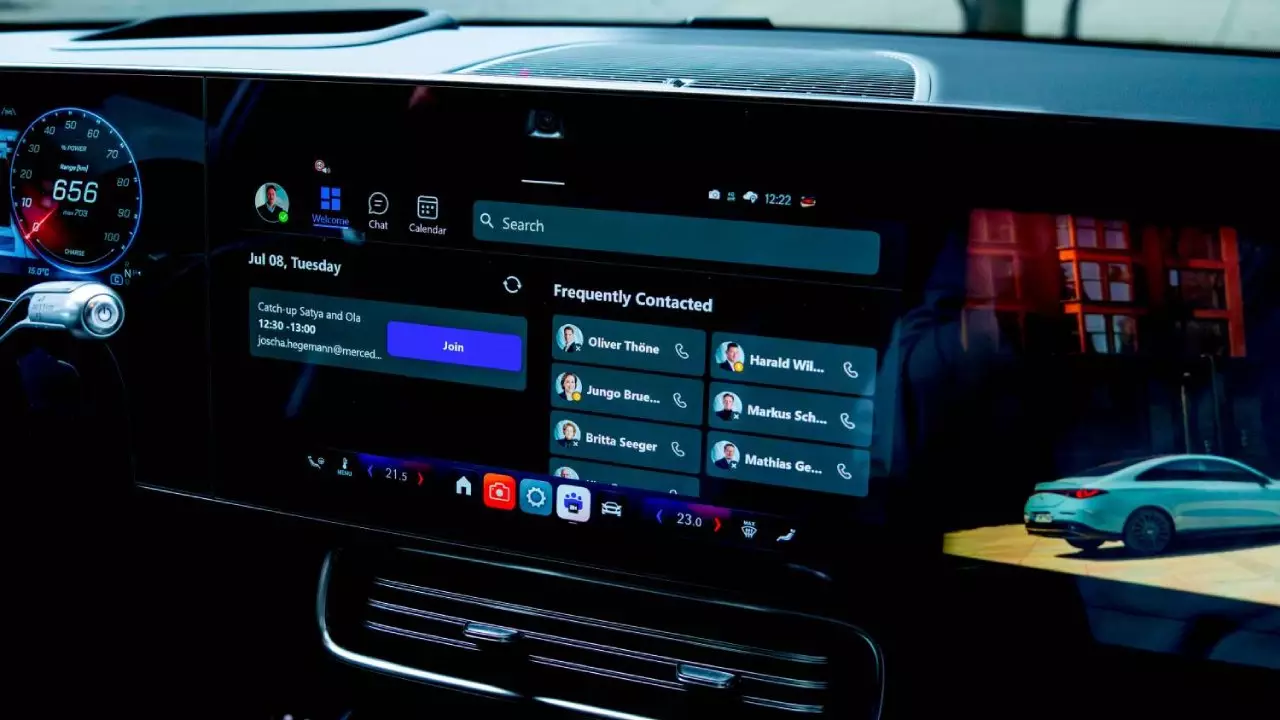In a rapidly evolving digital landscape, Mercedes-Benz is positioning itself once again as a pioneer of innovation, daring to blend corporate productivity with the driving experience. Their latest update to in-car Teams integration exemplifies this ambition, offering drivers the ability to stream live video to colleagues while on the move. This move signals a radical shift in how luxury automakers perceive mobility—not just as transportation but as an extension of the modern, hyper-connected workspace. However, this daring feature, which at first glance appears to invite unnecessary distraction, reveals a deeper strategic intent: to redefine what it means to be productive and visible in a digital age where image and efficiency are currency.
While the idea of “working while driving” may seem fraught with safety concerns, Mercedes emphasizes that this feature is designed with strict safety protocols. The in-car camera enables live visibility to colleagues, deliberately excluding the driver’s view of shared content or other meeting participants to eliminate visual distraction. The automatic deactivation of live video when the car is in motion suggests an acknowledgment of risks, yet it also inadvertently raises questions about the true utility of such technology. Is this merely a status symbol — a high-tech badge of honor for executives who want to showcase their relentless drive — or a genuine attempt to integrate work seamlessly into all facets of life?
The Illusion of Safety Versus Reality
Mercedes claims safety as the primary concern, assuring users that the feature complies with international laws and minimizes driver distraction. Yet, the reality remains that having a camera pointed at the driver might, consciously or subconsciously, influence behavior. Does it encourage a performative display of diligence, or does it tempt drivers into subtle visual engagements, like checking their reflection or adjusting the camera? The risk of unintended self-exposure—be it nasal explorations, distracted glances at the mirror, or possibly worse—can’t be easily dismissed.
Furthermore, this technology blurs traditional boundaries between personal safety and corporate visibility. In an era where remote work has normalized overt displays of commitment, such features risk crossing into the domain of overexposure. What message does it send when a high-end vehicle becomes a mobile office, broadcasting to colleagues even as one navigates complex traffic? The veneer of safety and productivity may mask a more complex societal shift: the normalization of constant availability and the erosion of personal boundaries in pursuit of status and efficiency.
Beyond Video: AI and the Future of Intelligent Mobility
Mercedes’s integration of generative AI via Microsoft 365 Copilot adds another layer of sophistication to their vision. The expectation that drivers could, via voice commands, manage emails, analyze client data, or prepare for meetings exemplifies a bold step towards intelligent mobility. Yet, the assumption that AI models are infallible glosses over an uncomfortable truth: reliance on AI in a safety-critical environment remains inherently risky. Errors in data retrieval or misunderstood commands could potentially divert attention at critical moments.
This leap into AI-powered interfaces signals a future where vehicles are no longer solely transport devices but extensions of our digital ecosystems. It transforms the car into a command center, promising increased productivity but also raising questions about distraction, data privacy, and the ethical implications of relying on machine intelligence in complex, real-world scenarios. The excitement surrounding such innovation must be tempered with skepticism about its reliability and its impact on driver focus.
The Rise of a New Status Symbol
Ultimately, Mercedes’s latest technological push seems rooted in the desire to position itself at the intersection of luxury, innovation, and social signaling. In a competitive market where owning cutting-edge tech is as important as the car itself, features like live in-car video and AI assistance are more than mere convenience—they are status symbols that signal success, influence, and modernity.
Yet, amidst this parade of technological bravado, a critical perspective is necessary. Is the pursuit of such features genuinely improving the driving experience or merely creating another layer of superficiality? Are we, as a society, prepared to accept the blending of work, safety compromise, and personal boundaries in pursuit of progress? As Mercedes presses forward into this uncharted territory, the conversation should focus not only on innovation but also on the core priorities—safety, privacy, and the authentic value these technologies bring to our lives.
In the end, the true challenge lies in balancing the allure of technological advancement with the fundamental need for safety and human-centric design. Mercedes’s latest move promises to reshape perceptions of mobility, but it also demands a vigilant, critical eye—one that questions whether we are truly steering toward a better future or merely accelerating down a high-speed lane of technological spectacle.

